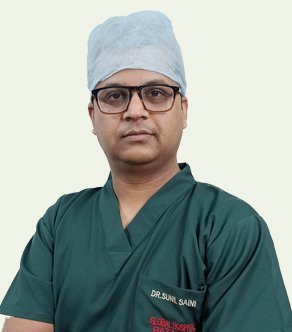We Provide Care And Support to Senior Citizens
Our experienced team offers services for both residential and commercial properties.With over 25 years of experience in the industry, we boast all of the knowledge and expertise in repairing.
Need help? Call Us Now : +91-8505993322
Welcome to Globalhealthcare India
Our experienced team offers services for both residential and commercial properties.With over 25 years of experience in the industry, we boast all of the knowledge and expertise in repairing.
Joint pain is a common issue affecting millions of people worldwide, often due to conditions like osteoarthritis, sports injuries, or age-related wear and tear. When conservative treatments like medication and physical therapy don’t provide adequate relief, people often look for more advanced options. Two of the most common approaches to managing joint pain are PRP vs surgery.
In this blog, we’ll explore PRP vs surgery for joint pain, looking at their differences, benefits, and how each option might work for you. By understanding the non-surgical joint pain relief options available, you can make an informed decision on how to proceed with treatment.
PRP Therapy involves the use of your own blood to treat joint pain and promote healing. The process begins with drawing a small amount of blood from the patient, which is then processed in a centrifuge to concentrate the platelets (which are rich in growth factors). The resulting platelet-rich plasma (PRP) is injected directly into the painful joint.
The platelets in PRP stimulate tissue regeneration, reduce inflammation, and accelerate healing. It’s a minimally invasive procedure that has gained popularity in recent years, particularly for treating joint pain caused by arthritis, tendonitis, and sports injuries.

On the other hand, surgery for joint pain is often considered when the pain is severe, and other treatments have failed to provide relief. There are several types of joint surgeries depending on the specific condition:
Surgery typically offers long-term relief but comes with greater risks, a longer recovery period, and potential complications.
PRP therapy offers a non-surgical solution for people who want to avoid the risks, cost, and long recovery times associated with surgery. If your joint pain is in the early or middle stages, PRP therapy may be a better option to relieve pain, promote healing, and potentially avoid the need for surgery altogether.
Unlike joint surgery, which requires large incisions and a lengthy recovery period, PRP therapy is a minimally invasive procedure that involves only a simple injection. Patients can often resume normal activities in just a few days, which makes it an attractive option for those who cannot afford long periods of downtime.
PRP therapy promotes the body’s natural healing process by concentrating growth factors that help regenerate tissue and reduce inflammation. This regenerative approach can be especially effective for patients with conditions like osteoarthritis, where the cartilage in the joints is slowly deteriorating.
Compared to joint replacement surgery, PRP therapy is significantly less expensive. Although the cost of PRP therapy varies by location, it’s generally far more affordable than the surgery, which can involve hospitalization, anesthesia, and other surgical costs.
Since PRP therapy uses the patient’s own blood, there’s very little risk of complications or rejection. In contrast, surgery carries the risk of infection, scarring, and even the need for future revision surgery.
If you’re considering PRP therapy for joint pain, Cured by Global Healthcare India provides state-of-the-art treatments tailored to your specific needs. With the help of experienced professionals and modern equipment, you can receive non-surgical joint pain relief that helps avoid the risks associated with surgery.
Global Healthcare India specializes in PRP therapy and regenerative medicine, offering personalized care for patients with joint pain. Their skilled team ensures that you receive the highest quality of care, so you can return to your active lifestyle as quickly as possible.

When deciding between PRP vs surgery for joint pain, the best choice depends on the severity of your condition, your recovery goals, and the risks you’re willing to take. For mild to moderate joint pain, PRP therapy offers non-surgical joint pain relief with a quicker recovery time and fewer risks than traditional surgery. However, in more advanced cases, joint surgery might still be necessary for long-term relief.
Consulting with a healthcare professional is key to determining the best course of action. With Cured by Global Healthcare India, you can explore effective, non-surgical options like PRP therapy, giving you the chance to heal naturally and avoid the potential complications of surgery.
PRP therapy is primarily used to treat joint pain, osteoarthritis, tendonitis, and ligament injuries by promoting healing and tissue regeneration.
PRP therapy is highly effective for treating mild to moderate joint pain and can help avoid the need for more invasive treatments like surgery.
PRP therapy involves a needle injection into the joint, which may cause some discomfort, but it’s generally well-tolerated. Local anesthetics are often used to minimize pain.
In many cases, PRP therapy can provide significant pain relief and may delay or even prevent the need for joint surgery. However, if joint damage is severe, surgery might still be necessary.
The cost of PRP therapy in India varies, but it is generally more affordable than surgery. For exact pricing, it’s best to consult with a clinic or healthcare provider.

Sciatica pain, which typically originates from the lower back and…

Joint pain is a common issue affecting millions of people…

Athletes often face injuries that can interrupt their careers or…

Dr. Sunil Saini is a distinguished orthopedic surgeon with expertise in cosmetic limb lengthening, deformity correction, and Ilizarov surgery. With a career spanning over two decades, he has made significant contributions to the field of orthopedics, particularly in advanced limb lengthening techniques.
View all posts
Leave A Comment